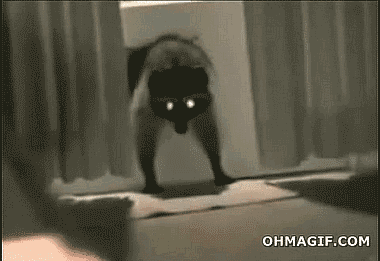Funny Gifs Biography
Source(google.com.pk)The Graphics Interchange Format (GIF; /ˈdʒɪf/ or /ˈɡɪf/) is a bitmap image format that was introduced by CompuServe in 1987[1] and has since come into widespread usage on the World Wide Web due to its wide support and portability.
The format supports up to 8 bits per pixel for each image, allowing a single image to reference its own palette of up to 256 different colors chosen from the 24-bit RGB color space. It also supports animations and allows a separate palette of up to 256 colors for each frame. These palette limitations make the GIF format unsuitable for reproducing color photographs and other images with continuous color, but it is well-suited for simpler images such as graphics or logos with solid areas of color.
GIF images are compressed using the Lempel-Ziv-Welch (LZW) lossless data compression technique to reduce the file size without degrading the visual quality. This compression technique was patented in 1985. Controversy over the licensing agreement between the software patent holder, Unisys, and CompuServe in 1994 spurred the development of the Portable Network Graphics (PNG) standard. All the relevant patents have now expired.
CompuServe introduced the GIF format in 1987 to provide a color image format for their file downloading areas, replacing their earlier run-length encoding (RLE) format, which was black and white only. GIF became popular because it used LZW data compression, which was more efficient than the run-length encoding that formats such as PCX and MacPaint used, and fairly large images could therefore be downloaded in a reasonably short time, even with very slow modems.
The original version of the GIF format was called 87a.[1] In 1989, CompuServe devised an enhanced version, called 89a,[2] which added support for animation delays (multiple images in a stream were already supported in 87a), transparent background colors, and storage of application-specific metadata. The 89a specification also supports incorporating text labels as text (not embedding them in the graphical data), but as there is little control over display fonts, this feature is not widely used. The two versions can be distinguished by looking at the first six bytes of the file (the "magic number" or "signature"), which, when interpreted as ASCII, read "GIF87a" and "GIF89a", respectively.
GIF was one of the first two image formats commonly used on Web sites, the other being the black and white XBM.[citation needed]
The feature of storing multiple images in one file, accompanied by control data, is used extensively on the Web to produce simple animations. The optional interlacing feature, which stores image scan lines out of order in such a fashion that even a partially downloaded image was somewhat recognizable, also helped GIF's popularity,[citation needed] as a user could abort the download if it was not what was required.
In 2012, the word "GIF" was officially recognised as a verb as well as a noun, meaning "to create a GIF file". The US wing of the Oxford University Press voted it their word of the year, saying that GIFs have evolved into "a tool with serious applications including research and journalism".[3][4]
Funny Gifs

Funny Gifs

Funny Gifs

Funny Gifs

Funny Gifs

Funny Gifs

Funny Gifs

Funny Gifs

Funny Gifs

Funny Gifs

No comments:
Post a Comment